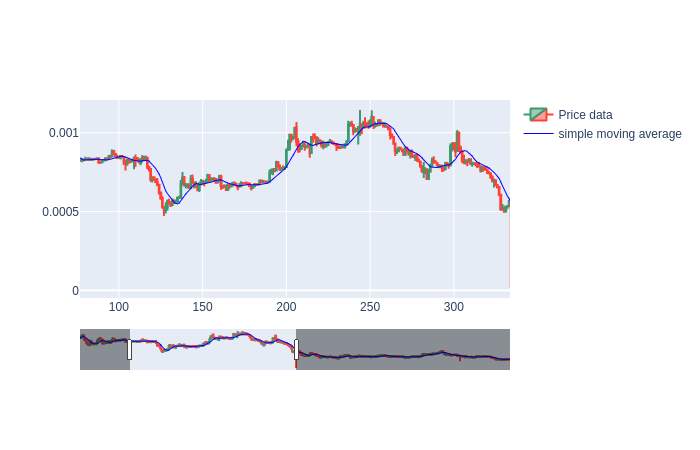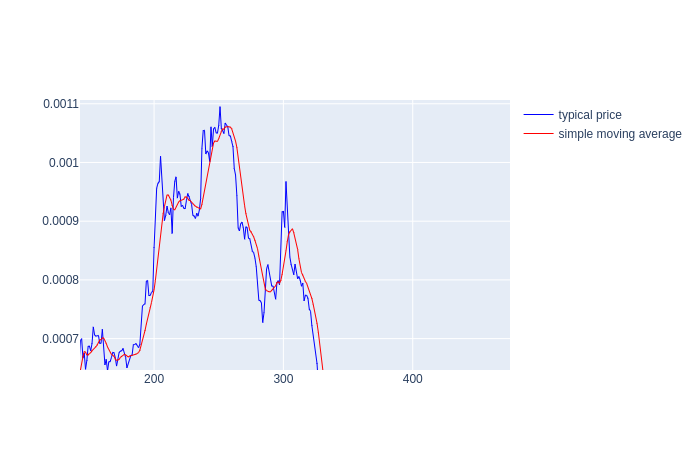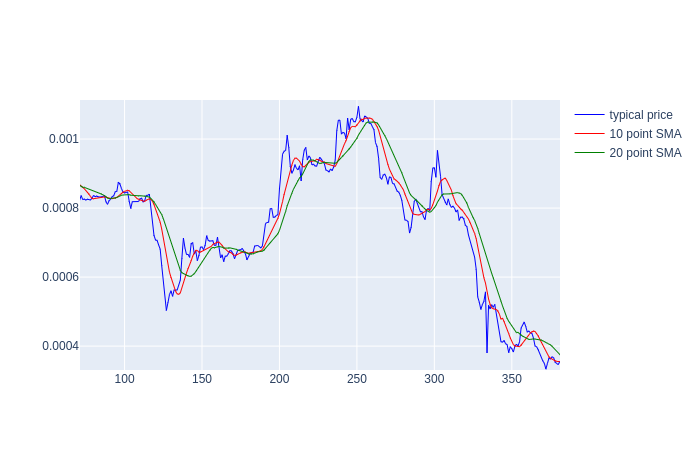
Theory
Moving averages are used as a basis for many technical indicators. A moving average is a sort of local average around a given point. In signal processing terms the moving average acts as a lowpass filter, removing high frequency "noise" from the signal.
Implementation
The signal parameter is a one dimensional array. It makes sense to use the typical price as this input.
import numpy as np
def simple_moving_average(signal, points):
"""
Calculate the N-point simple moving average of a signal
Inputs:
signal: numpy array - A sequence of price points in time
points: int - The size of the moving average
Outputs:
moving_average: numpy array - The moving average at each point in the signal
"""
moving_average = np.zeros(len(signal))
for i in range(points):
moving_average[i] = np.sum(signal[0:i + 1])/(i+1)
for i in range(points, len(signal)):
moving_average[i] = np.sum(signal[i + 1 - points:i + 1])/(points)
return moving_average
Results
Comparing the simple moving average to the typical price reveals the behaviour of the SMA: it is smoother than the typical price signal and it lags behind the typical price signal.

It is also worth comparing moving averages of different periods:

Note that the 20 point moving average is smoother than the 10 point moving average and lags even further behind the typical price.
Posted Using LeoFinance
@tipu curate :)
Upvoted 👌 (Mana: 0/21)